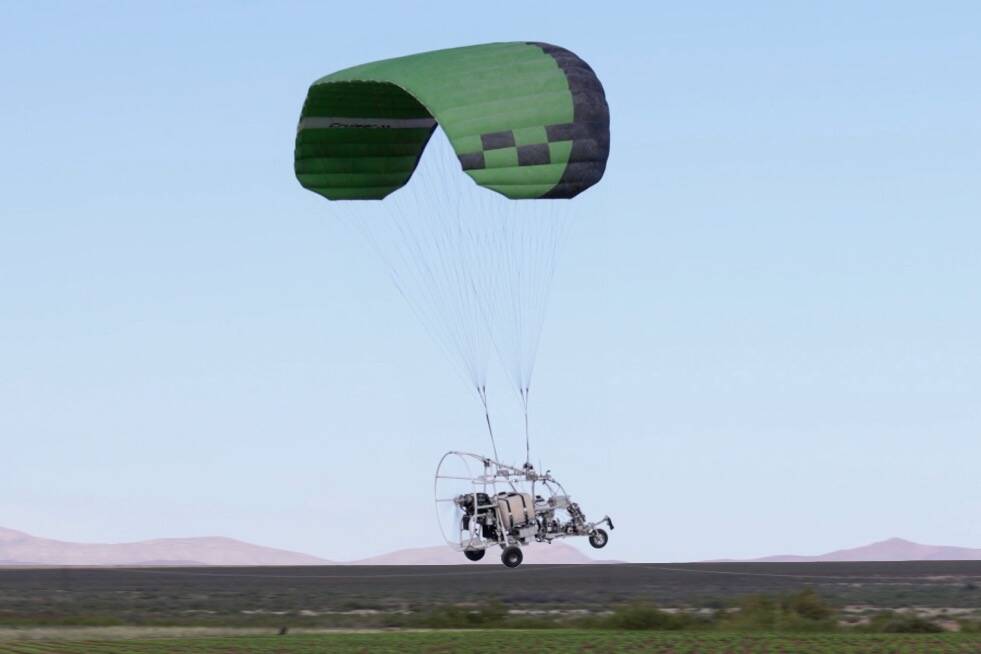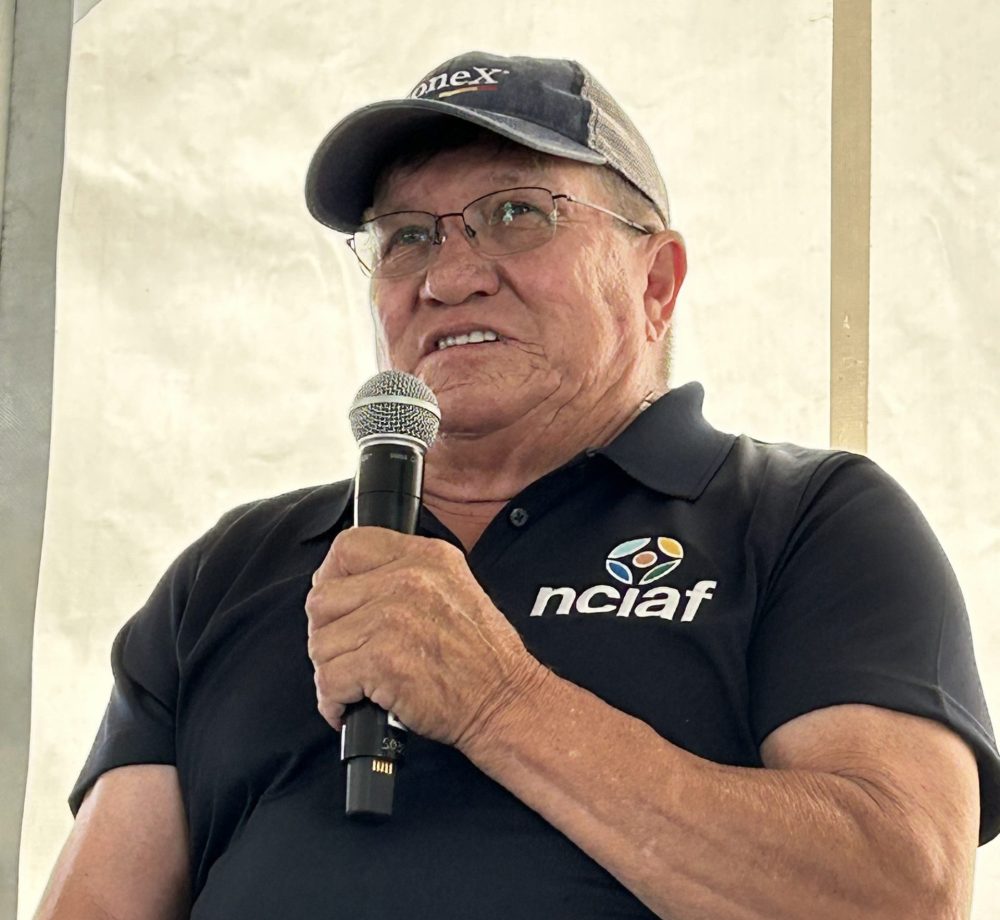Paraglider powers a new kind of sprayer

Glacier FarmMedia—For Janay Meisser, director of innovation for ag co-operative United Farmers of Alberta (UFA), scouting for high-tech solutions that make farming more productive and profitable is an essential aspect of her job.
The Stratus AirSprayer, a new drone tool unveiled by Saskatchewan-based Precision AI in July, is unlike anything she’s seen so far.
“I think they’ve got something really special,” says Meisser, who was invited to see the AirSprayer in action during field testing in New Mexico in May.
Read Also


First Nations should demand at-market lease rates: Lerat
First Nations need to stop leasing out their land to non-Indigenous farmers for below-market prices, says farmer and band councillor Terry Lerat of Cowessess First Nation in south-central Saskatchewan. Instead, bands should be getting every penny they can for the farmland they own and using that money to get themselves back into farming.
“There are a lot of things that make the Stratus AirSprayer unique,” she adds. “I think it will change how the farming community starts to think about managing crops. It’s going to shift some mindsets.”
The Stratus AirSprayer is different than the quadcopters and fixed-wing UAVs (unmanned aerial vehicles) typically associated with ag drones. Essentially, it’s a powered paraglider — one that can carry heavier loads and stay aloft much longer than conventional drones.
Daniel McCann, founder and CEO of Precision AI, says the advanced, autonomous aerial sprayer was designed to increase efficiency and maximize field time in the kind of large-acre farms found in Western Canada.
“Spray drones are great if you have 40 acres of onions or something like that,” says McCann. “But if you’ve got 10,000 acres of canola, good luck getting a small drone sprayer to cover that.”
The body of the Stratus AirSprayer is 3.25 metres (10 feet, eight inches) long, 2.1 metres (six feet, nine inches) wide and 2.25 metres (seven feet, five inches) high. It weighs 700 lbs. (318 kg) empty and can carry a payload of up to 833 lbs. (378 kg).
The machine has a three-blade propeller at the back powered by a Rotax 100-horsepower gasoline engine, and it relies on a 541-square-foot (50.3-metre) parachute or “soft wing” to stay aloft.
McCann acknowledges the Precision AI team was a bit worried at first about how the UAV’s parachute would go over, given that it’s so different.
But he says that really hasn’t been a concern, once farmers are shown how the Stratus AirSprayer works, and they can see how handling the parachute isn’t any harder than folding and unfolding a spray boom.
The flight speed of the AirSprayer is just under 40 m.p.h. (61 km/h) and it is able to take off from a farmer’s field as long as there is 350 to 500 feet (107 to 152 metres) of runway room available. When the job’s done, the hardware can be loaded onto a flatbed truck or a 12-foot trailer, and the canopy folded and packed up into an easy-to-carry travel bag.
The Stratus AirSprayer can carry 100 U.S. gallons (378 litres) of herbicide, fungicide or insecticide solutions, which according to Precision AI is almost 20 times more than smaller ag drones. A bigger payload means more time in the air and more acres covered in a day.
The gas-powered AirSprayer can fly up to five hours before refueling, which McCann maintains is an obvious advantage over electric drones. “Your typical spray drones, even the big ones, typically max out at about 10 minutes of airtime, then you’ve got to swap batteries and refill it,” he says.
All this can mean substantial savings for farmers. Precision AI maintains it costs less than $3 per acre to operate the Stratus AirSprayer, a fraction of the cost of traditional drone technology which it says ranges from $6 to $13 per acre.
The automated Stratus AirSprayer can do precise GPS-guided broadcast sprays in two interchangeable swath widths, one 18 feet (5.5-metre) wide and the other 30 feet (nine-metres) wide.
A Generation Two version of the AirSprayer, slated to be released soon after the Generation One model, will feature green-on-green spray capability, developed by Precision AI with the use of artificial intelligence and advanced computer vision.
McCann says even with its high-tech capabilities, the Stratus AirSprayer isn’t difficult to operate and maintain, adding to its appeal to farmers. “Except for the onboard AI system, everything can be fixed fairly easily.”
While the Stratus AirSprayer is designed to allow farmers to do large-scale aerial applications on their own, it isn’t meant to compete directly with crop dusters and other aerial spraying businesses. Instead, Precision AI views them as potential partners as the UAV is unrolled in the Canadian market.
That likely won’t happen right away, as the Canadian government hasn’t yet approved using drones in aerial applications of crop protectant products. Precision AI is on a committee to advise Canada’s Pest Management Regulatory Agency (PMRA) on the necessary changes required to allow spraying from UAVs.
“At the end of the day, we’ve got the technology that can be used as an automated aerial sprayer. It’s built out, and we just need to wait for the regulatory environment to catch up,” says McCann.
Precision AI hopes the PMRA will follow the lead of U.S. regulators and release a decision soon approving the use of drones for ag chemical applications. In the meantime, Precision AI plans to continue testing in the U.S. as well as on farms in Western Canada as it prepares for a limited release of the Stratus AirSprayer next year.
Meisser views the AirSprayer as a good value proposition, both in terms of productivity and return on investment. She also sees it as a very practical solution for farmers looking to get the most out of their crops.
“The Precision AI team is really connected to the farming community and are trying to build solutions for farmers with farmers. I think that they’re solving problems that matter,” she says.
“I think they just got down to brass tacks to determine what does this (machine) really need to do.”
In Meisser’s eyes, it won’t take long for the Stratus AirSprayer to gain traction among farmers once it catches on with leading-edge ag adopters and influencers willing to give the technology a try.
“You just need some strong ambassadors to showcase the technology,” she says. “Farmers are the most innovative people I know. They solve problems on a daily basis, and it doesn’t take any of them too long to identify where they see value. I think they will embrace it.”
Source: Farmtario.com

